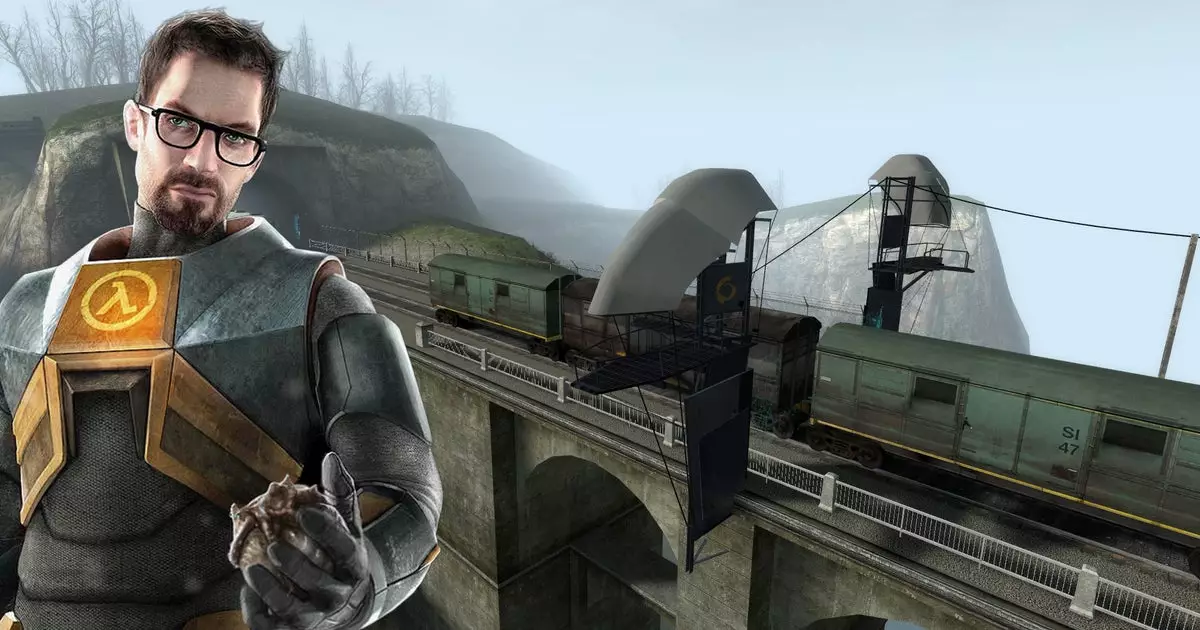In the realm of gaming, few titles have managed to sustain their relevance for over two decades as convincingly as Valve’s *Half-Life 2*. Its influence on narrative-driven shooters and physics-based gameplay remains undeniable. Yet, amid the passage of time, developers often overlook the importance of maintaining and refining beloved classics. The recent minor update to *Half-Life 2* exemplifies a commitment—albeit quiet and understated—to preserving the integrity of this vintage masterpiece. Much like a watchmaker meticulously adjusting the gears of an antique clock, Valve’s developers have chosen to fine-tune minute aspects of the game, such as the speed of a train in the “Highway 17” chapter. This small yet significant change rekindles the dynamism and challenge that the original game intended, permitting players to once again beat the iconic train in a game of chicken—a feat that has been largely elusive since the game’s initial release.
This age-old gameplay moment remains a testament to the timeless thrill of player agency. By restoring the train’s speed to match the original difficulty curve, the developers reaffirm that classic design principles matter. It’s a subtle reminder that long-standing barriers in older games can still be overcome, even if years have passed and gameplay mechanics have been tinkered with in the interim. The minute adjustment signals a recognition that enthusiasts value authenticity—that the nostalgia encapsulated within the game is worth preserving, not just through remakes or re-releases but through the careful application of small, meaningful improvements.
Attention to Detail: Beyond the Glitches and Into the Heart of Gameplay
What sets this update apart isn’t just the train fix alone but the broader philosophy behind it. These were not massive overhauls or disruptive changes—they were microscopic adjustments aimed at the game’s core experience. Fixing collision issues allowing NPCs to shoot through walls perhaps may seem trivial at first glance; yet, such details are what distinguish a good game from a great one, especially in a title that is revered for its physics and environmental interactions.
Furthermore, fixing NPC interactions—like Alyx obstructing players near teleporters—may seem insignificant in the grand scheme of things, but it touches on the fundamental principle of design integrity. Developers, particularly in a game as historically significant as *Half-Life 2*, bear a certain custodial responsibility. They must ensure that the game’s worlds and mechanics remain as intact and authentic as possible, even if only through incremental updates. These tiny corrections speak volumes about a developer’s respect for its legacy and their understanding that players cherish precise and consistent gameplay.
However, these fixes also implicitly demonstrate Valve’s willingness, or perhaps reluctance, to revisit an aging classic. Not every developer possesses the patience or humility to update a game that is already considered a masterpiece. Valve does, and in doing so, they subtly acknowledge that aging titles are living entities that deserve ongoing care. The challenge lies in balancing modernization with reverence—making improvements without diluting the original experience.
Unseen Guardians of Gaming Heritage
It’s amusing—and somewhat endearing—to imagine an invisible team of meticulous developers at Valve, tending to these minute details in aged game code as if they were heirloom artifacts. Rummaging through aging source files or fighting with Windows XP-era interfaces might appear absurd, yet it underscores a deeper truth: that *Half-Life 2* is more than just a game; it’s a cultural monument. Every collision fix or physics tweak keeps its spirit alive, preserving its relevance in a rapidly evolving gaming landscape.
These updates, though small, reflect something profound about how we interact with our gaming pasts. Instead of leaving games to fade into obscurity, developers and fans alike demonstrate that even after decades, there remains value—and a sense of responsibility—in keeping these worlds functional, authentic, and engaging. The effort speaks to a broader philosophy: that timeless experiences deserve preservation, not just as nostalgia but as enduring pillars of interactive art.
In the end, these quiet updates serve as a testament to the undying love for classic games—a recognition that sometimes, the most powerful improvements are the ones we don’t immediately see but profoundly feel. Valve’s ongoing stewardship of *Half-Life 2* illustrates how true gaming mastery isn’t just about pioneering new frontiers but also about caring for and refining its storied past. As long as these small, dedicated efforts continue, the legacy of *Half-Life 2* will remain vibrant, a living monument shaped by unseen guardians intent on preserving the magic of its timeless experience.

